
The 2010 China floods began in early May 2010. Three hundred and ninety-two people died, and a further 232 people were reported missing as of June 30, 2010, including 57 people in a landslide in Guizhou. Fifty-three of the deaths occurred from the flooding and landslides between May 31 and June 3, and 266 deaths occurred between June 13 and June 29. Four hundred and twenty four people were killed by the end of June, including 42 from the Guizhou landslide; 277 more were killed and 147 were missing in the first two weeks of July, bringing the death toll as of August 5 to 1,072. A landslide in early August in Gansu killed at least 1,471 people and left 294 missing. In total, the flooding and landslides killed at least 3,185 people in China by August 31. More than 230 million people in 28 provinces, municipalities, and regions, especially the southern and central provinces and regions of Zhejiang, Fujian, Jiangxi, Hubei, Hunan, Guangdong, Guangxi, Chongqing Municipality, Gansu, Sichuan, and Guizhou, and the northeastern province of Jilin were affected, while at least 4.66 million people were evacuated because of the risk of flooding and landslides in the latter half of June. By early August, over 12 million people were evacuated, and that number rose to 15.2 million by August 31.
The 2011 China floods were a series of floods from June to September 2011 that occurred in central and southern parts of the People's Republic of China. They were caused by heavy rain that inundated portions of 12 provinces, leaving other provinces still suffering a prolonged drought, and with direct economic losses of nearly US$6.5 billion.

The 2012 North Korean floods began in mid-July 2012 when Tropical Storm Khanun affected parts of the country, killing at least 88 people and leaving more than 62,000 people homeless. Torrential rains on 29 and 30 July 2012 worsened the situation, causing additional damage and casualties and forcing the government to request international assistance. Severe rainfall also affected the southern region of North Korea in August, killing at least six.
The 2012 Luzon southwest monsoon floods, was an eight-day period of torrential rain and thunderstorms in Luzon in the Philippines from August 1 to August 8, 2012. Its effects centered on Metro Manila, the surrounding provinces of the Calabarzon region and the provinces of Central Luzon. Not a typhoon in its own right, the storm was a strong movement of the southwest monsoon caused by the pull of Typhoon Saola (Gener) from August 1–3, strengthened by Typhoon Haikui. It caused typhoon-like damage: the most damage caused by rain since September 2009, when Typhoon Ketsana (Ondoy) struck Metro Manila. The heavy rain caused the Marikina River to overflow, destroying areas also affected by Ketsana, triggering a landslide in the Commonwealth area and collapsing the northbound Marcos Highway.

Severe Tropical Storm Nakri, known in the Philippines as Tropical Storm Inday, was a large, long-lived, and slow-moving tropical cyclone that produced prolific rains over Japan and South Korea in early August 2014.

Severe Tropical Storm Gladys in August 1991 was a large tropical cyclone that affected Japan and South Korea. An area of disturbed weather first formed within the Western Pacific monsoon trough on August 15. Slowly organizing, the disturbance developed into a tropical depression on August 15. Heading northwest, Gladys became a tropical storm the following day. Despite forecasts of significant strengthening, its large size only enabled slow intensification. After turning west, Gladys attained peak intensity on August 21 near Okinawa. After turning north and bypassing Kyushu, Gladys began to encounter significant wind shear, which caused weakening. Gladys veered west, interacting with land. Gladys weakened to a tropical depression on August 24, and dissipated the next day.
In mid-March 2019, monsoonal downpours caused widespread flooding and landslides across South Asia.
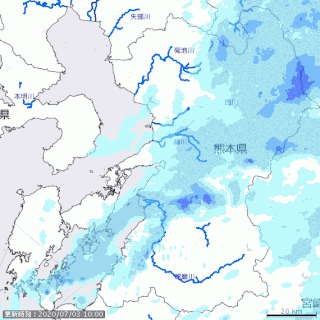
The 2020 Kyushu floods were a series of floods in July 2020 brought on when record-breaking heavy rain hit the prefectures of Kumamoto and Kagoshima, on the southern Japanese island of Kyushu, on 4 July 2020 in the middle of the East Asian rainy season. The event is officially referred to as Reiwa ni-nen shichi-gatsu gōu by the Japan Meteorological Agency. As a result of flooding and landslides, 77 people were confirmed dead and approximately seven are missing. Fourteen of the victims were residents of an old age home in Kuma, Kumamoto that was flooded. Approximately 15,335 buildings were destroyed, damaged or flooded.
Between June and August 2020, floods severely impacted large areas of both North and South Korea due to heavy rains of the regional rainy season, primarily in the far southern parts of the Korean Peninsula. These floods are closely related to ones across China and in Kyushu, Japan. As of 9 August 2020, 30 people have died in South Korea as a result.

The Korean Peninsula is a peninsula region located over Eastern Asia. The region is divided into North Korea and South Korea.
The 2021 floods and landslides in Sri Lanka are flash floods and mudslides which were caused from heavy torrential rainfalls during May and June 2021. As of 7 June 2021; the monsoon floods affected in about 10 districts, killing at least 17 persons including about 10 because of floods and 4 people because of mudslides. About 245,000 people were affected living in Colombo, Puttalam, Kandy, Kalutara, Kurunegala, Gampaha, Nuwara Eliya, Ratnapura and Galle. More than 800 houses were reported to have been damaged.
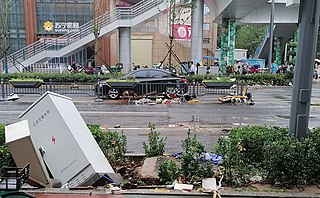
Several floods struck China starting in June 2021, most of them caused by heavy rainfalls in different areas. According to the World Meteorological Organization, such heavy rains are frequently a result of climate change. The most notable floods were the 2021 Henan floods, which left 398 dead or missing.
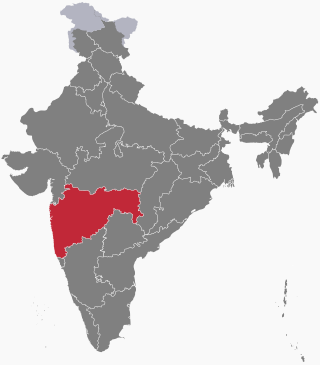
A series of floods took place across the Indian State of Maharashtra in 2021. As of 28 July 2021, around 251 people have died and over 100 are still missing due to floods and landslides. Thirteen districts have been affected in western Maharashtra.

On 8 August 2022, large scale floods hit the capital of South Korea, Seoul, especially Gangnam District and surrounding areas. It was preceded by the highest rainfall in 80 years. 2,800 buildings were damaged and at least 9 people were killed. 163 people in Seoul were made homeless. 50 cities and towns were issued with landslide warnings. Power cuts were widespread. President Yoon Suk-yeol warned the public of more rainfall. The highest recorded rainfall was 17 inches (43cm) Seoul's Dongjak district.
Korea has historically suffered several floods due to heavy rains, typhoons, and heavy snowfalls. Most of the flood damage was caused by storms and tsunamis caused by typhoons, and floods.
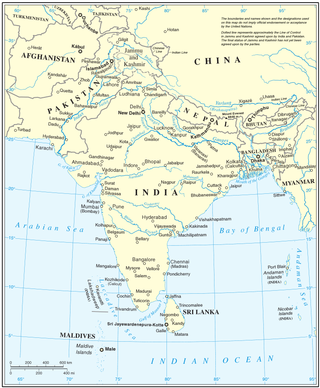
From January to October 2022, excessive rainfall and widespread monsoon flooding occurred in the South Asian countries of Afghanistan, Bangladesh, India, Nepal, Pakistan, and Sri Lanka. It has become the region's deadliest floods since 2020, with over 3,700 people dead.
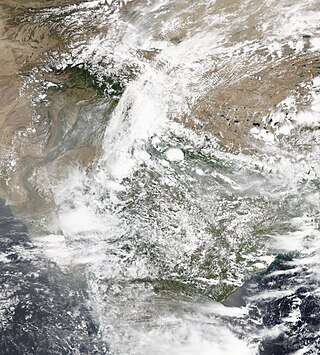
Heavy rainfall during the 2023 monsoon season resulted in severe flooding and landslides across Northern India, primarily affecting residents in Himachal Pradesh, Punjab, Chandigarh, Uttarakhand, Jammu and Kashmir, Haryana, Rajasthan and Delhi.

Flooding affected parts of South Asia since March of 2023, killing many and destroying buildings.

Typhoon Khanun, known in the Philippines as Typhoon Falcon, was a powerful, erratic and long-lived tropical cyclone that moved along Okinawa, Japan and the west coast of the Korean Peninsula in August 2023. The sixth named storm, and the fourth typhoon of the 2023 Pacific typhoon season. Khanun started as a low-pressure area in the Pacific Ocean. It rapidly intensified into a Category 4-equivalent typhoon on the Saffir–Simpson scale over the Philippine Sea on August 1, before undergoing an eyewall replacement cycle. Khanun weakened slightly as it moved closer to the Ryukyu Islands, battering them with heavy rain and strong winds. Khanun began to degrade its eye on satellite imagery due to quasi-stationary and warming cloud tops. Steady weakening continued as Khanun approached the Korean Peninsula and it eventually made landfall on Geojedo in South Korea. The storm dissipated shortly thereafter.













